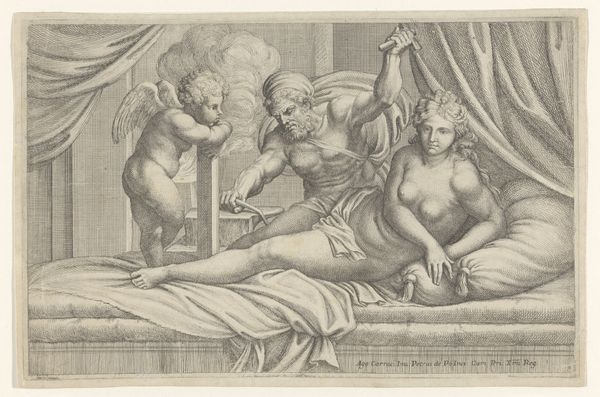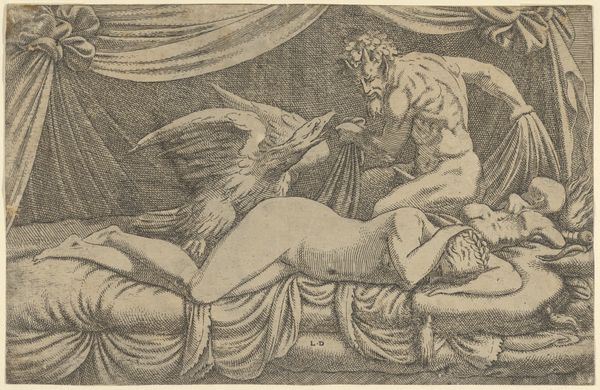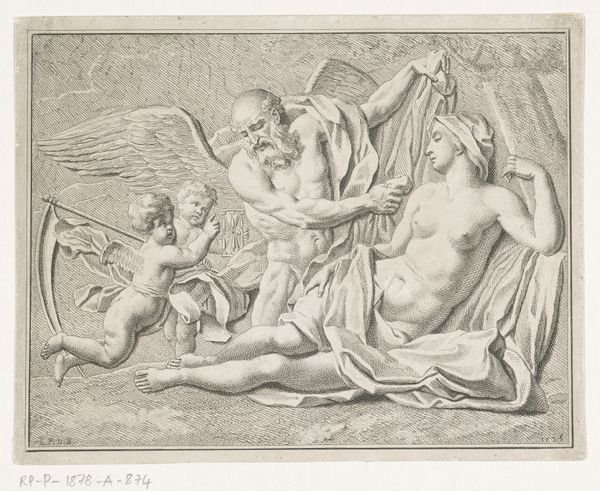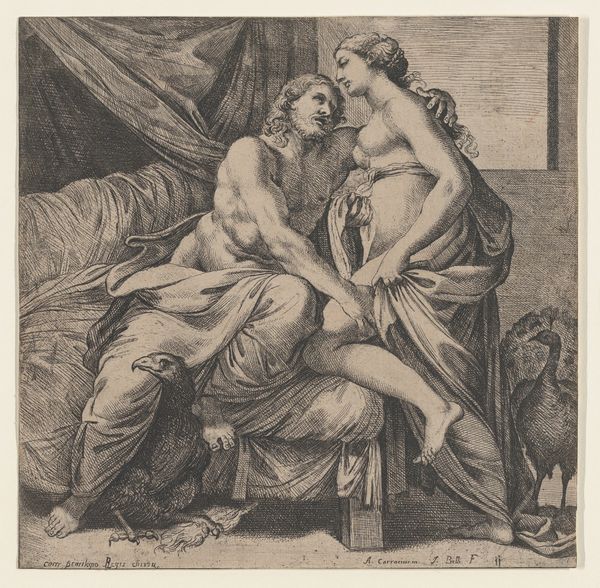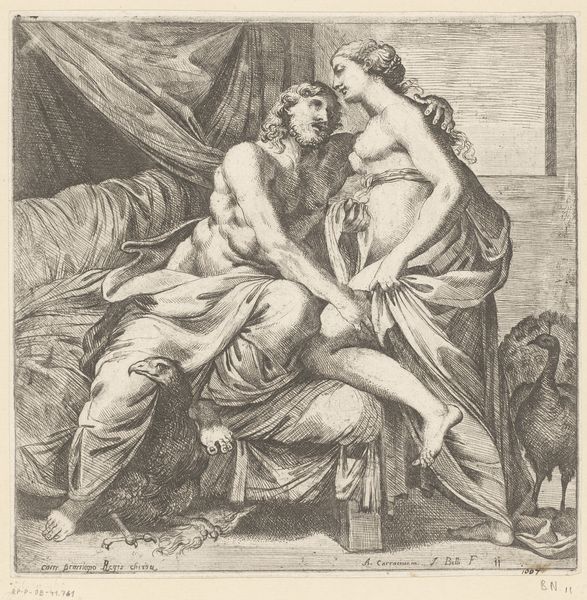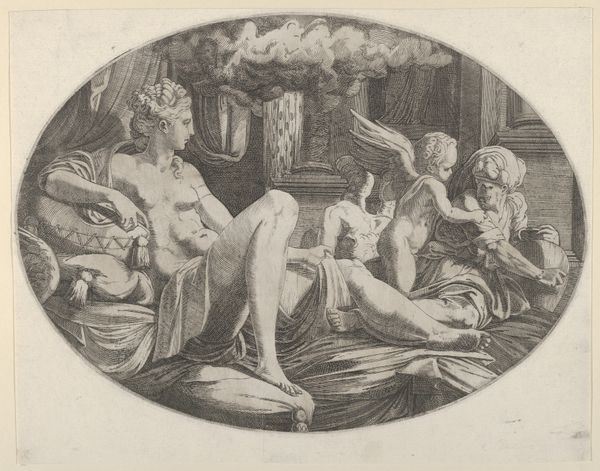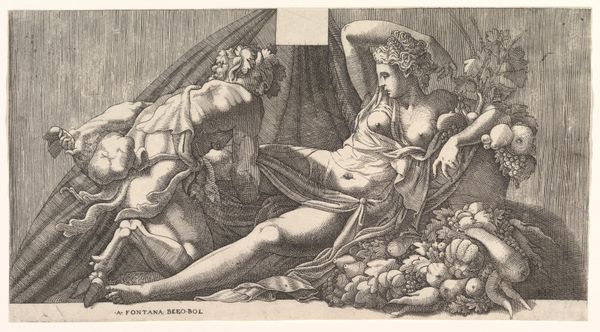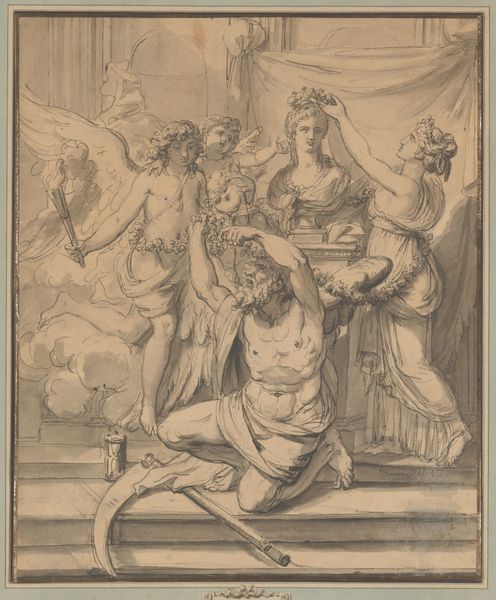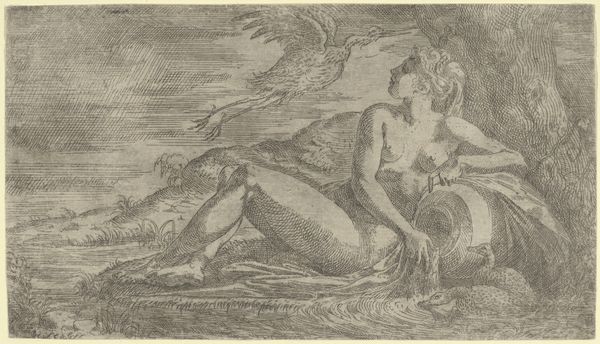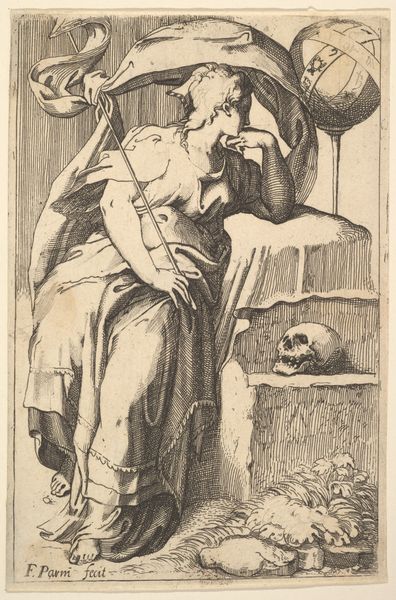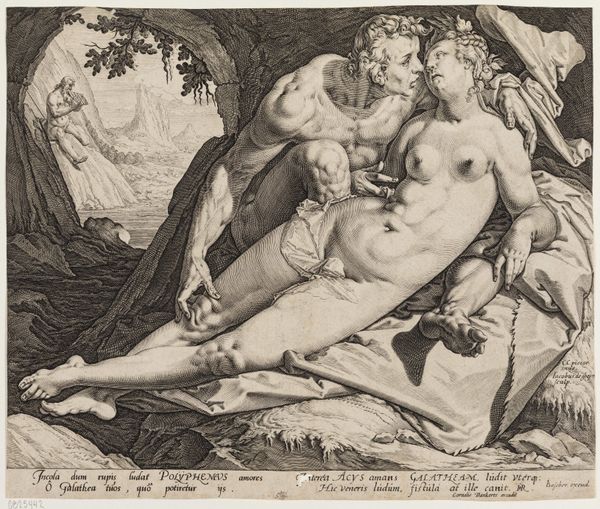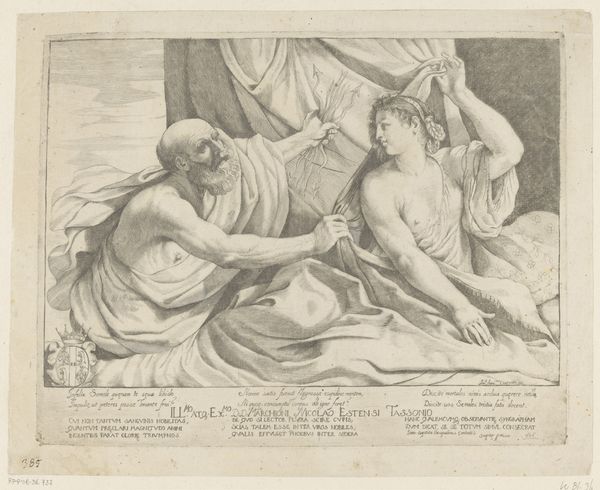
drawing, print, engraving
#
drawing
#
allegory
# print
#
mannerism
#
figuration
#
history-painting
#
nude
#
engraving
Dimensions: Sheet (trimmed): 6 3/4 × 10 1/4 in. (17.1 × 26 cm)
Copyright: Public Domain
Curator: Before us is Antonio Fantuzzi’s engraving, "Jupiter and Antiope," created sometime between 1540 and 1545. The scene presents a moment from classical mythology. Editor: My initial impression is one of contained tension. The composition is carefully balanced, and while the subject is suggestive, there’s a formality to the figures, a distinct lack of dynamism that feels very Mannerist. Curator: Indeed. Consider how the narrative intersects with gender and power. The myth recounts Jupiter's seduction—or, some would say, rape—of Antiope. Here we see her reclining, seemingly unaware of his true identity as he approaches in disguise, usually as a satyr or in this case perhaps even more bestial. This representation subtly underscores the vulnerability of women to deception and male dominance. The fruits next to her evoke fertility and the promise of new life and prosperity for the land and monarchy but from an encounter born out of deceit. Editor: The formal choices reinforce this interpretation in an unexpected way. Look at the use of line—the dense cross-hatching creating deep shadows, particularly on Jupiter, suggesting a weightiness, a groundedness in contrast to Antiope's languid pose. The stark contrast of light and shadow definitely elevates the formal design but contributes to the feeling of ominous threat in the subject's position to Jupiter. I cannot decide who is meant to have more dominance based on visual construction only. Curator: Right, and how that plays into contemporary power dynamics is crucial. Fantuzzi, as part of the Fontainebleau School, was creating art for the French court and aristocracy. These mythological scenes were not just decorative, they reinforced social hierarchies and legitimized power through classical allegories, but also revealed the dangerous nature of this same power through his portrayal of Antiope and the male characterizations in his work. Editor: A convincing reading. Still, consider the artistic process of engraving: The meticulous layering of lines, the building up of form through controlled marks. One must give pause and note that it gives an air of carefully staged formality, lending a cool distance that somehow diffuses the raw, violent interpretation of Jupiter's deceptive guise. There are other versions where his animal form makes his intention completely transparent. Curator: Perhaps that very detachment speaks to the normalization of these power imbalances in the period. By presenting it in this seemingly elegant, almost detached manner, Fantuzzi may inadvertently expose the insidious nature of systemic oppression. Even more, that detachment acts as a critique through the guise of mythological glorification. Editor: Perhaps. Either way, this is an engraving that, despite its scale, contains remarkable visual and narrative density. Curator: A work that reveals the complexities of interpreting historical art through a contemporary lens, prompting ongoing dialogue.
Comments
No comments
Be the first to comment and join the conversation on the ultimate creative platform.
